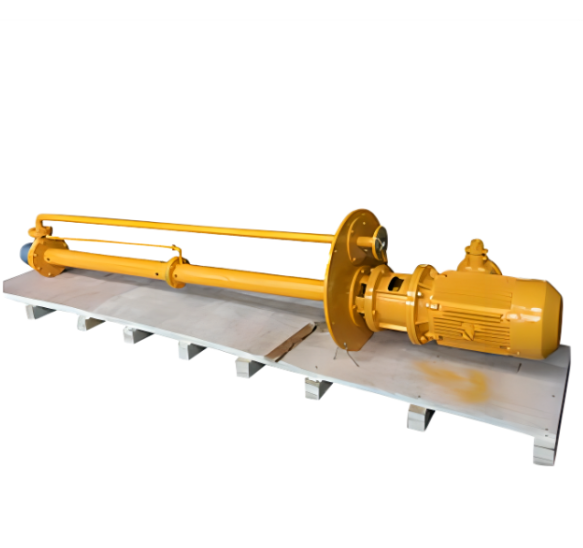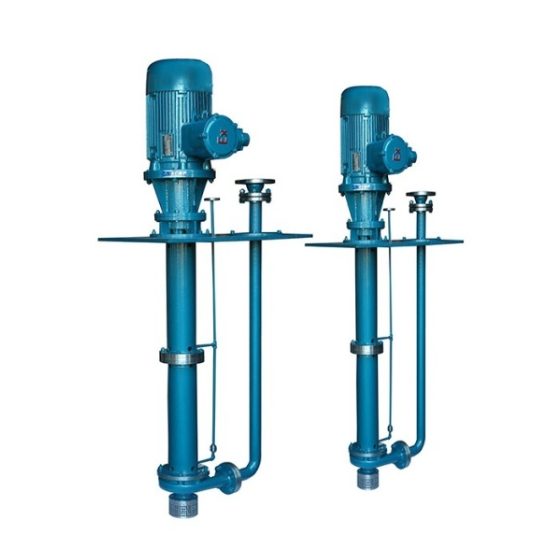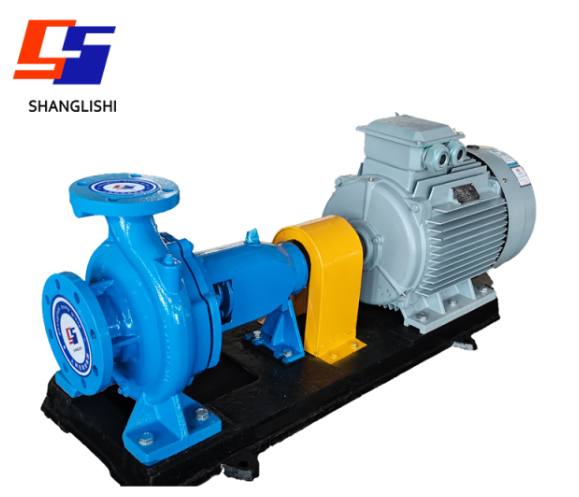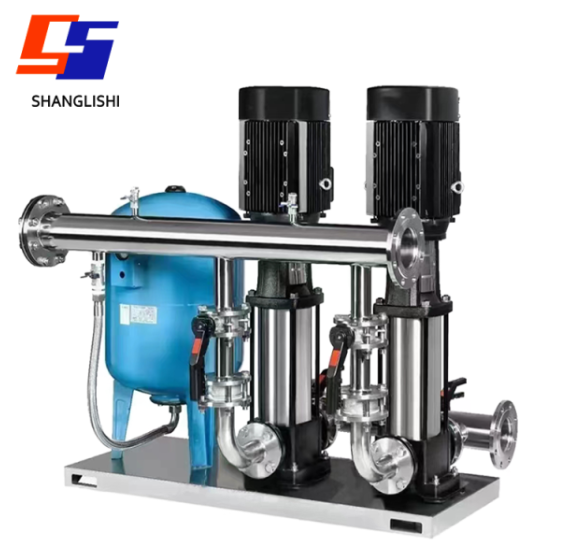What Do You Need to Know About Centrifugal Pumps?
Published:
Apr 22,2025
Centrifugal pumps are widely used in a variety of industrial applications due to their simple design, reliability, and ability to handle large volumes of liquid efficiently.

Centrifugal pumps are widely used in a variety of industrial applications due to their simple design, reliability, and ability to handle large volumes of liquid efficiently. Here are key things you should know:
-
Operation Principle: Centrifugal pumps operate based on the conversion of mechanical energy (from the motor) into kinetic energy through the impeller. This causes the liquid to gain velocity, which is then converted into pressure as it exits the pump.
-
Components: The main components of a centrifugal pump include the impeller, pump casing, shaft, bearings, and motor. The impeller is the key part that creates the flow of the liquid, while the casing contains the liquid and directs it toward the discharge point.
-
Performance Curve: Centrifugal pumps have a characteristic performance curve that shows the relationship between flow rate and pressure (head). As flow increases, the pressure usually decreases, and vice versa. Understanding this curve is essential for selecting the right pump for a specific application.
-
Types: Centrifugal pumps can be classified into different types based on their configuration. Common types include horizontal centrifugal pumps, vertical centrifugal pumps, single-stage centrifugal pumps, and multi-stage centrifugal pumps. Each type is suited for different applications depending on factors such as required head, flow rate, and space constraints.
-
Maintenance: Centrifugal pumps are generally low-maintenance, but they do require periodic checks on components such as seals, bearings, and the impeller. Monitoring for wear and tear is important to ensure optimal performance and longevity.
-
Efficiency: The efficiency of a centrifugal pump is influenced by factors such as the design of the impeller, the quality of the materials used, and the operating conditions. Ensuring the pump is operating within its designed parameters is crucial to maximizing efficiency.
-
Cavitation: A common issue with centrifugal pumps is cavitation, which occurs when the pressure at the pump inlet drops below the vapor pressure of the liquid, causing the formation of vapor bubbles. This can lead to damage to the pump components. Proper system design and maintenance help prevent cavitation.
What is the Most Common Application of Vertical Centrifugal Pumps?
Vertical centrifugal pumps are used in a wide variety of applications, particularly in situations where space is limited or where a vertical configuration is more practical. Some of the most common applications include:
-
Water and Wastewater Treatment: Vertical centrifugal pumps are commonly used in water treatment plants, where they help to move water through filtration systems, chemical dosing systems, and other treatment processes. They are also used in sewage treatment facilities to handle effluent and wastewater.
-
Cooling Systems in Power Plants: In power generation plants, vertical centrifugal pumps are used to circulate cooling water to the condenser systems. These pumps help maintain the temperature of the system by moving large volumes of water.
-
Industrial Processing: Many industries use vertical centrifugal pumps to handle chemicals, acids, and other liquids in processing plants. Their ability to manage high-flow, low-pressure conditions makes them ideal for applications in the chemical, petrochemical, and pharmaceutical industries.
-
Oil and Gas: In the oil and gas industry, vertical centrifugal pumps are used in various applications, including pumping crude oil, water injection, and in drilling operations. Their rugged design makes them suitable for handling abrasive and viscous fluids.
-
Flood Control and Irrigation: Vertical centrifugal pumps are often used for flood control in areas that require the drainage of large volumes of water. They are also employed in irrigation systems to transport water to agricultural fields.
-
Fire Protection Systems: Vertical centrifugal pumps are used in fire protection systems, particularly in large buildings or industrial complexes. They help supply water to fire suppression systems, ensuring that an adequate water supply is available in case of emergencies.
Applications of Horizontal Centrifugal Pumps
Horizontal centrifugal pumps are widely used in various industries due to their reliability, efficiency, and versatility. Here are some of the common applications:
Water Supply and Distribution: These pumps are commonly used in municipal water supply systems to transport water over long distances and ensure a consistent flow to residential and industrial areas.
Agricultural Irrigation: In agriculture, horizontal centrifugal pumps are used for irrigation purposes, moving water from sources like rivers, wells, or reservoirs to fields to promote crop growth.
HVAC Systems: Horizontal centrifugal pumps are used in heating, ventilation, and air conditioning (HVAC) systems to circulate chilled or heated water, maintaining optimal temperatures in buildings.
Chemical and Petrochemical Industry: These pumps are ideal for handling chemicals, petroleum products, and various liquids in refineries, processing plants, and chemical manufacturing.
Mining and Mineral Processing: Horizontal centrifugal pumps are used to transport slurry, chemicals, and other liquids in mining operations, especially for dewatering and transporting slurry from mining sites.
Fire Fighting Systems: Horizontal pumps are often part of fire protection systems, providing a reliable and constant water flow to fire suppression equipment in commercial and industrial facilities.
Applications of Vertical Centrifugal Pumps
Vertical centrifugal pumps are preferred for applications where vertical configurations save space or when handling liquids in confined spaces. Common applications include:
Water and Wastewater Treatment: Vertical centrifugal pumps are integral to water and sewage treatment plants, where they are used to move water through filtration systems and treatment stages.
Cooling Systems in Power Plants: These pumps circulate cooling water through the condenser systems in power plants, maintaining the temperature and ensuring the efficient operation of the facility.
Oil and Gas Industry: Vertical centrifugal pumps are commonly used in offshore oil rigs and refineries, where space is limited and fluids like crude oil or water need to be moved in harsh environments.
Flood Control and Irrigation: In areas prone to flooding, vertical centrifugal pumps are used for drainage and flood control. They are also used in irrigation systems for transporting water to agricultural fields.
Industrial Processing: Vertical centrifugal pumps are used to transport chemicals, oils, and other fluids in various industries, particularly in plants where space constraints are a concern.
Applications of Single-Stage Centrifugal Pumps
Single-stage centrifugal pumps are designed for handling low to medium-pressure applications. They are typically used when only a single impeller stage is needed to move fluids. Common applications include:
Single-stage centrifugal pumps
Water Supply and Distribution: Single-stage centrifugal pumps are commonly used in municipal water systems and residential applications for moving water with low to medium pressure.
Irrigation: These pumps are often used for agricultural irrigation, where they efficiently deliver water to crops with minimal pressure requirements.
Chemical Processing: In chemical manufacturing and processing, single-stage centrifugal pumps are employed to handle liquids that do not require high pressure, such as solvents or light chemicals.
Cooling Systems: Single-stage pumps are used in small to medium-scale cooling systems for industrial machinery and HVAC applications, circulating water or coolant fluids.
Fire Protection Systems: In small to medium-sized buildings or residential areas, single-stage centrifugal pumps are used in fire fighting systems to provide water to sprinklers and fire hoses.
Applications of Multi-Stage Centrifugal Pumps
Multi-stage centrifugal pumps are designed to achieve higher pressures, making them suitable for applications where a single stage is not sufficient. These pumps are ideal for transferring fluids at higher pressures over long distances. Common applications include:
High-Pressure Water Supply: Multi-stage pumps are used in water supply systems that require high pressure, such as for large commercial or industrial complexes.
Booster Stations: These pumps are used in booster stations to elevate the pressure of water in pipelines, ensuring that water reaches elevated areas or distant locations with sufficient pressure.
Desalination Plants: In seawater desalination processes, multi-stage centrifugal pumps are employed to handle high-pressure water to force seawater through membranes in reverse osmosis units.
Oil and Gas Industry: Multi-stage pumps are used in oil extraction and transportation, particularly for boosting the pressure of crude oil in pipelines and lifting fluids from deep wells.
Fire Fighting Systems: In large-scale fire protection systems, multi-stage pumps are used to provide the necessary pressure for delivering large volumes of water to fire suppression systems in skyscrapers and large industrial complexes.
Boiler Feed Water Systems: Multi-stage centrifugal pumps are essential in boiler systems, where high-pressure feed water is required to maintain steam generation and efficient power production.
Each type of centrifugal pump—whether horizontal, vertical, single-stage, or multi-stage—has specific advantages depending on the application, such as space constraints, flow rate, and pressure requirements.
Keyword:
Recommended
SHANGLISHI PUMP GROUP
Department Director: Ms. Wang
Tel: +86-311-82725800/82725629
Email: admin@sls-pump.com
WhatsApp: +86 15830676372
Mobile Website

Mobile Website
Copyright © 2022 SHANGLISHI PUMP GROUP






